Those of you who have laid parquet flooring at home will know that there are 3 options to choose from: laminate, solid and laminate. But what's the difference between them, why do we choose one and not the other, what conditions require a particular choice? Without claiming to give the perfect solution, I propose to present the pros and cons of each choice.
But first a description of the variants.
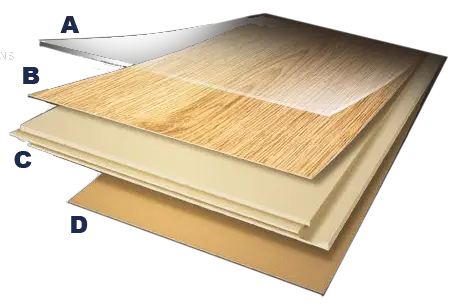
Laminate flooring is a synthetic product made of several overlapping layers. The wooden look is given by an image of the wood, basically a photograph or drawing over which a layer of varnish is applied. The image is very real and for the unfamiliar, very difficult to distinguish from wood. It reproduces the wood's natural design, with grain, knots, pores, but also some effects created by finishes on the wood, such as signs of ageing or deterioration of the wood over time.
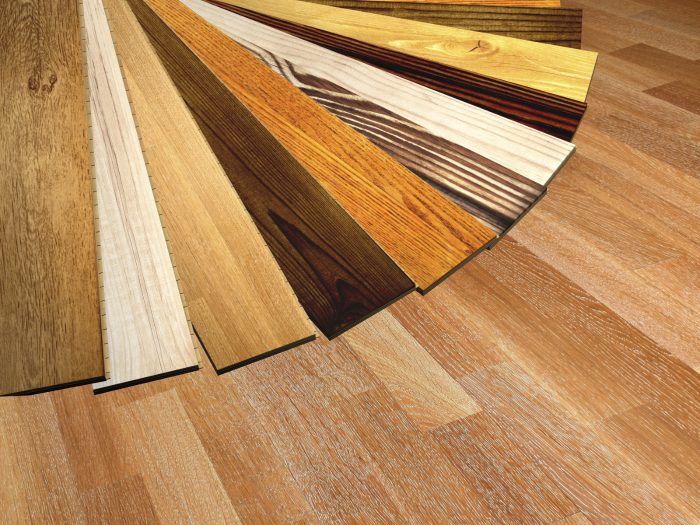
This image is placed over a wooden derived timber panel, MDF or HDS (high-density panels). The sandwich is completed with layers of resin and adhesive. Laminate flooring panels are made to be easily installed, based on the principle nut and stink (lamb and uluc).
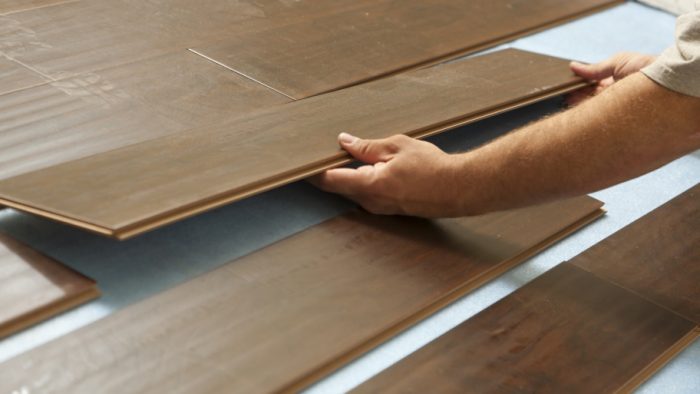
Laminate flooring can be bought from DIY stores such as Dedeman, Leroy Merlin, Praktiker, Hornbach or Baumax. Laminate flooring is the cheapest type of flooring.
Massive parquet it's made from solid wood, so it's practically one piece of wood.
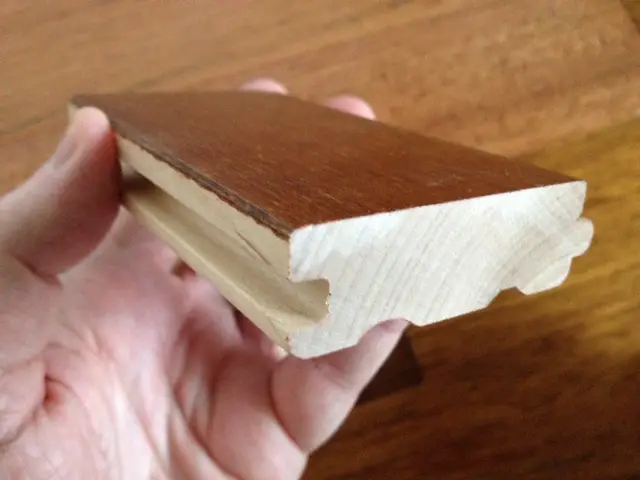
Harder woods are used, oak, acacia,
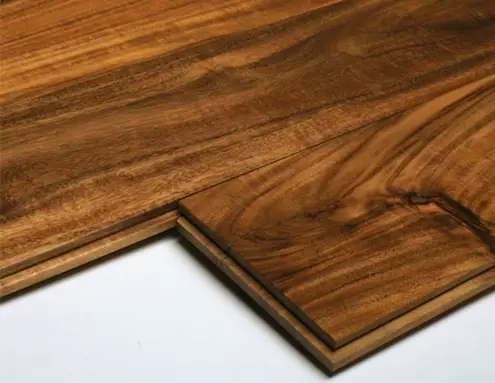
exotic woods, because they have to withstand the pressure and mechanical aggression of traffic. The solid parquet pieces are also built to fit together, but there are also straight elements that are glued or nailed to a backing.
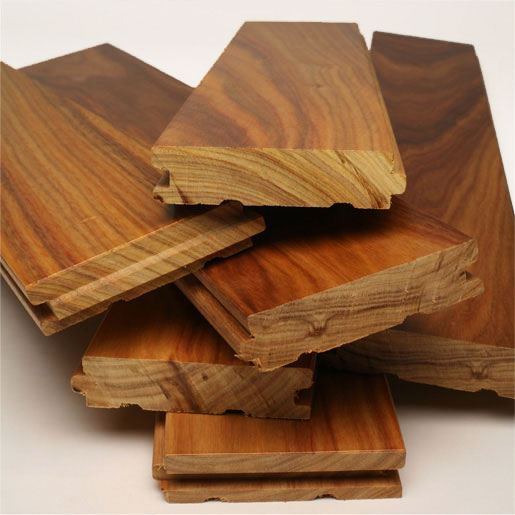
Layered parquet looks like a combination of the two. In other words, it's a multi-layered product, but unlike laminate flooring, which is synthetic, this is wood layers.
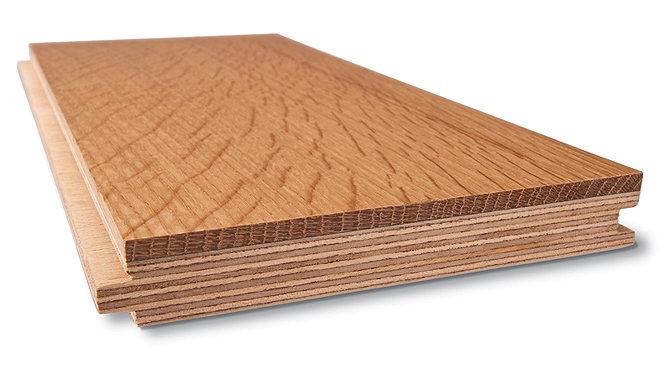
Basically, what you see is a layer of solid wood cut or peeled from a log, thicker than a technical veneer to withstand more maintenance (scraping and repainting). This layer is glued over layers of technical veneer, laid perpendicular to each other, just like plywood. This composite is then processed and finished exactly like solid wood flooring.

photo source: thesolidwoodflooringcompany.com
Each has its advantages and disadvantages. Laminate flooring has the advantage of a very good price, versatility and the fact that it is very easy to install and can even be the subject of a DIY project. There are several grades of laminate flooring, depending on quality. Experts do not recommend installing cheap laminate flooring in areas with high humidity such as bathrooms or kitchens. Inexpensive laminate flooring has low moisture and scratch resistance. A cheap laminate floor can be installed for example in the bedroom or other such more protected areas.
The main disadvantage of this laminate flooring is the unnatural, "popping" noise it makes when you walk on it. It is different from wood flooring and sometimes quite loud. It can be mitigated by using quality laminate flooring and sound insulating and sound absorbing materials. However, no matter how well installed, it will never sound like wood.
Solid and laminate flooring are quite similar, even in price, but they also have elements that set them apart. Solid parquet is always the most desirable, but sometimes hard to access because of the price. It has natural beauty and 'warmth', and with proper maintenance will last a long time. It should be known, however, that as it is a solid wood, it also has restrictions, and for some disadvantages. It has dimensional variations depending on humidity, which is why it is not recommended for the ground floor of homes or for installation in basements, bathrooms or kitchens. Also because of humidity, it is never mounted directly on concrete floors.
It is less resistant to mechanical shocks, so this should be taken into account before installing it in areas where there is a risk of heavy objects falling on the floor or where people walk with stiletto heels. Such mechanical aggression can cause holes or bevels in the floor surface. Larger pets are no "friends" of solid parquet flooring either.
Unlike solid parquet, laminate is more dimensionally stable due to the way it is made (perpendicular arrangement of layers). It can be installed without any problems on the ground floor and in other areas where solid parquet is not recommended. It can be installed directly on the concrete floor if it has a maximum moisture content of 4%. It is mechanically more resistant, but it should not be forgotten that the first layer is still solid wood.

As far as installation is concerned, it is best to have it done by professionals in the case of solid parquet. Because of the dimensional variation, a distance must be left next to the wall to allow for expansion. If such areas are not left, the parquet swells. It is also said to have been installed by a good team of professionals if, for 4 seasons after installation, the parquet has not undergone any visible changes (swelling or shrinkage).
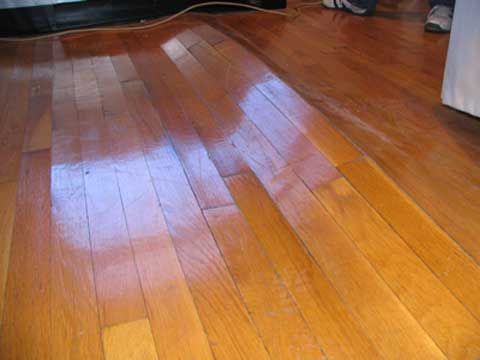
Startified parquet can also be installed as a DIY project, but it is not as simple as laminate. You need to have some knowledge and it's a good idea to do a lot of research before you start. Or, better still, still call in professional teams.
Laminate flooring is ready finished, the only thing you need to do is install it. Solid or laminate flooring can be factory-finished or after installation. Production finishing is done with oils or varnishes that are highly resistant to scratching or mechanical shock. Post-fit finishing can be done with waxes, oils or special high hardness traffic varnishes.

Finishing with wax if oil is very beautiful, but less resistant compared to lacquers. But as there's a lot to say about finishing materials for parquet flooring, it's best to leave the subject for another time.
Your comments are welcome below. Share the article if you find it useful. Thanks.

























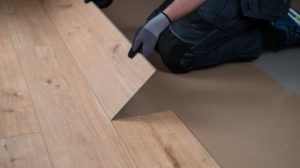

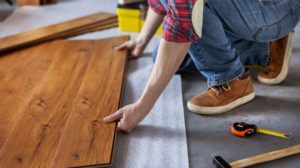

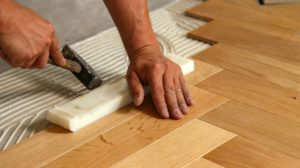

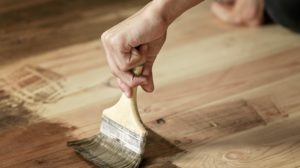
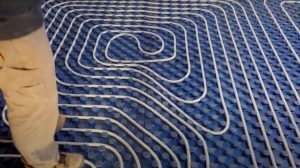



The term "laminate flooring" is misused in Romania to induce a quality that the "MDF floor with the picture on top" does not have and to give the impression of a superior quality that comes at a bargain price - in Romanian a deception for uninformed customers. The term used should be "laminate floor". "Laminated flooring" in English.
In the case of laminate flooring (consisting of a plywood backing and a thin layer of hardwood on top that is in high demand today and priced beyond true hardwood) - the term laminate flooring is incorrect. The correct term would be "laminate wood flooring".
In this category of laminates there is also laminate flooring - patterned panels - where the term laminate flooring can be used.
Finally, solid wood flooring is a piece of wood (made of wood from top to bottom) profiled or not (see the Italian lamparche where there are no profiles on the sides) from which you can make patterns - fir or chess for example, but also others.
Also included in solid wood flooring is solid wood flooring in the form of patterned panels - for example the famous Versailles and hundreds of other designs.
What to choose? Get it on a budget and above all consult a specialist as honest as possible. You can do some research on the web as it doesn't hurt.
1. If you are on a tight budget = laminate floor.
2. If you are on a middle budget you can choose laminate (which comes ready pre-painted and just needs to be installed at lower cost in terms of labor and dirt). It should be known that it can be re-done during its lifetime 1-2 times (depending on the conditions on site). After these rebuilds (scraping and relacquering) it has to be removed because the support is reached. A bonfire or some grilling can be done.
These startites have the advantage that they are stable in terms of movement (because of the backing plate). So for lovers of "non-moving" wood it is a good choice. But wood is wood, it's a living material that increases or decreases its volume depending on the humidity it has.
If you are on a budget you can choose solid parquet (with a wear layer of 8-11 mm). It requires more labour for installation, more materials, more time but it is the real "solid parquet". It can be refinished 4-5 times during its lifetime, it can be applied with even colours (baths), it can be slightly antiqued by knocking so each time it is refinished it can be finished differently. Well cared for it can last 2-3 generations.
3. If you're on a bigger budget then you can consider designer panels - Versailles for example.
But you can also use combinations of solid wood flooring arranged in a certain pattern and with inlays.
Good article and commentary
When choosing flooring, you should bear in mind that laminate flooring is cooler than solid wood or laminate flooring.
When choosing flooring, you should consider the long-term costs. If you choose a cheap floor that deteriorates quickly and then choose a quality floor that is more expensive, you may end up spending more money overall than if you bought a quality floor in the first place. Not to mention the disturbance in the house due to this work.
Both solid and laminate flooring can be installed directly on the screed, but the humidity in the screed must not exceed 2 % CM. When the humidity in the screed is higher, without vapour barrier, any kind of flooring will warp.
Can anyone recommend a laminate floor for formaldehyde-free underfloor heating (E 0 house). Thank you.
Hi Costel , I too am interested in a laminate floor for underfloor heating like you. Please let me know if you have found it? Thank you very much. I am waiting for a reply
Hi, I found laminate flooring for underfloor heating in the E Parquet store, you can try it here: http://www.e-parchet.ro/ro/blog/parchet-pentru-incalzire-in-pardoseala/ .
I hope I've been helpful, have a nice day!
Maybe I didn't find it but the website doesn't even list prices and that indicates a bad offer.
A nice day,
Cristi
Hello,
We don't understand exactly what offer and prices you are referring to. We do not sell parquet. We are a magazine. If you are referring to the magazine subscription, you can purchase it from the following link https://revistadinlemn.ro/product/abonament-revista-din-lemn/.
Thank you.